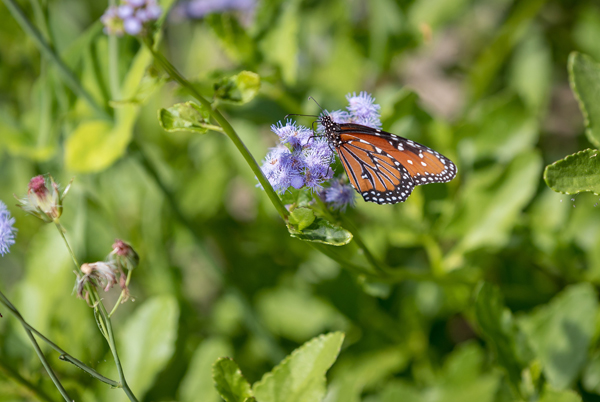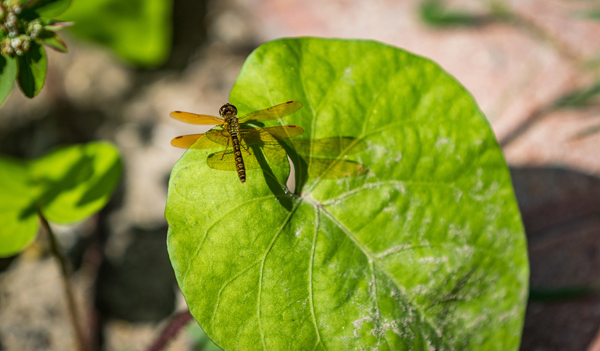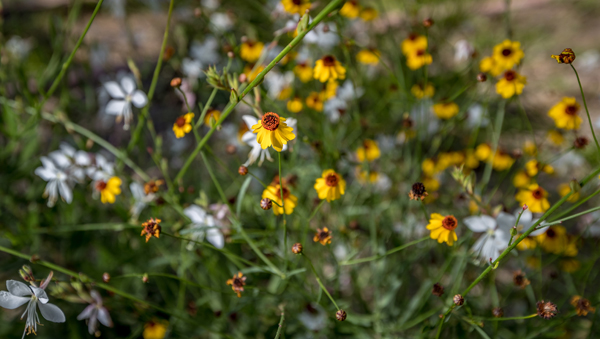- La Feria Community Holds Succesful Business Mixer Event
- Little Nashville to Take Place in Downtown Mercedes
- Lions Basketball Captures District Gold
- La Feria ISD Students Compete in Regional Chess Tournament
- Lions End First Half of 32-4A on a High Note
- La Feria ISD Held Another Successful Parent Conference
- Strong Appearance for Lions at Hidalgo Power Meet
- LFECHS Students Get to Meet Local Actress
- Students Participate in Marine Biology Camp
- Two LFECHS Students Qualify for All-State Band
UTRGV Lecturer Spearheads Butterfly Garden to Attract, Preserve Winged Beauties
- Updated: June 15, 2018
by Vicky Brito
BROWNSVILLE, TEXAS – The Lower Rio Grande Valley is home to nearly 40 percent of the 700 species of butterflies found in the United States. Now, the UTRGV biology department is hoping to attract as many of those as it can with its new butterfly garden on the Brownsville Campus, to help establish suitable habitat for butterflies and increase awareness of their importance.
Dr. Lucia Carreon Martinez, UTRGV lecturer of biology who is spearheading the garden project, said conservation is vital because butterflies and other pollinators are threatened by habitat loss due to development, pesticide and herbicide use.
“Butterflies, moths and other pollinators are indicators of biodiversity and a healthy environment,” she said. “These pollinators represent an important food source for birds, bats and other insectivorous animals that in turn keep the undesirable insects in check. And, through pollination, they aid in the production process of many fruits, nuts, berries, plant-derived medicines and foliage.”
According to the Food and Agriculture Organization of the United Nations, about one third of the world’s crop production depends on pollinators.
Construction on the UTRGV butterfly garden started in February, and volunteers now give their time and energy to help maintain the site.
Carreon Martinez said UTRGV facilities staff and collaborating students have been critical to the project, and the City of McAllen’s composting facility donated compost for the butterfly garden.
“We wouldn’t have been able to do it without them,” she said.

The Lower Rio Grande Valley is home to nearly 40 percent of the 700 species of butterflies found in the United States. Now, the UTRGV biology department is hoping to attract as many of those as it can with a new butterfly garden on the Brownsville Campus. Dr. Lucia Carreon Martinez, UTRGV biology lecturer who is spearheading the project, said conservation is vital because butterflies and other pollinators are threatened by habitat loss due to development, pesticide and herbicide use, and are a vital part of the Valley’s ecological balance. Construction on the garden started in February, and volunteers now help maintain the site. Photo: David Pike/UTRGV
Volunteer Jay Ontiveros, a criminal justice senior and one of the students who helped with the construction, said flora planted in the garden is native to the Lower Valley, and all of the plants are wildflowers, bought locally.
“Many of these are specific hosts for certain types of butterflies,” he said, pointing out a colorful bloom. “For example, planting milkweed is important for the caterpillar stage of the Monarch butterfly.”
Volunteer Damaris Antonio, a sophomore majoring in biology, said the garden can help improve the environment, both on campus and beyond.
“We are leading by example, trying to preserve the butterfly population and populations of other insects,” she said.
BUTTERFLY GARDEN TEAM MEMBERS
- Dr. Lucia Carreon Martinez, biology lecturer.
- Dr. Julie Mustard, assistant professor of biology.
- Dr. Alejandro Fierro Cabo, assistant professor in SEEMS and biology.
- Dr. Rupesh Kariyat, assistant professor of biology.
- Dr. Sara Black, lecturer I, biology.
- Jose Mata, biology major.
- Siurabe Argueta, biology major.
- Jessica Solis, biology major.
- Bryan Villanueva, biology major.
During construction of the garden, they sought help from the experts at Quinta Mazatlán in McAllen, Valley Nature Center in Weslaco, and the National Butterfly Center in Mission.
The garden, funded by the Office of the Provost’s Transforming Our World Strategic Plan grant, aims to provide research opportunities for students through experiential learning projects and engage the community through outreach produced by students.
To volunteer to help maintain the butterfly garden, contact Carreon Martinez at lucia.carreonmartinez@utrgv.edu.




